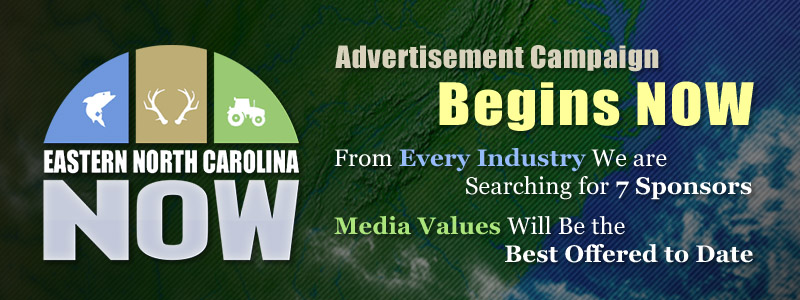Committed to the First Amendment and OUR Freedom of Speech since 2008
Progress Requires Faster Growth
Publisher's note: The article below appeared in John Hood's daily column in his publication, the Carolina Journal, which, because of Author / Publisher Hood, is inextricably linked to the John Locke Foundation.
RALEIGH During the years that North Carolina was riding high - particularly the 1980s and 1990s - state policymakers wrung their hands about the problems associated with a fast-growing, successful economy.
Rapid economic growth meant greater demand for public services such as infrastructure and education, they argued. It posed risks to the state's air and water resources. And because economic growth wasn't equally distributed, it exacerbated longstanding differences between metropolitan areas and rural counties.
 I suspect that many of these fretful policymakers would welcome a return to the days of rapid economic growth, as it has become evident that the public-policy problems associated with a lackluster economy are much worse.
I suspect that many of these fretful policymakers would welcome a return to the days of rapid economic growth, as it has become evident that the public-policy problems associated with a lackluster economy are much worse.
North Carolina's relatively weak job and income growth, for example, is making it much harder for governments to finance long-term public investment. On the revenue side, it means less money coming into state and local coffers per North Carolina resident. At the same time, a weak economy boosts demand for consumption subsidies such as unemployment insurance and Medicaid that trade off with public investment.
So if you think North Carolina spends too little on public infrastructure or education, your goal can't realistically be met without stronger economic growth. And if you think that I've got the causality wrong - that spending more on infrastructure or education would make the economy stronger - your quarrel is with the time-space continuum, not with me.
If spending more tax dollars on education boosts the economy, it does so in the long run, by improving the skill level of future workers, professionals, and entrepreneurs. Government is not a magical income-generation machine. It involves taxing money out of households and businesses, money that would otherwise be spent or invested privately. In the short run, if you think it is wise to set aside more money for public investment, you will find it much easier to accomplish when the economy is growing, more people are employed, households are receiving real (inflation-adjusted) increases in annual income, and public assistance isn't taking as big a bite out of state revenues.
The main levers that state and local policymakers can operate to boost economic growth in the short run involve the cost of doing business in the private sector. If by reforming taxes and regulations they increase the real rate of return on investing in new plants, equipment, and personnel in North Carolina, more businesses will expand or set up shop here.
I'm not saying that average economic growth is the only thing politicians need to care about. Even during North Carolina's boom years, there were some boats in dry dock that didn't float with the rising tide. Factors such as out-of-wedlock births, drug and alcohol abuse, the poverty cycle, educational mediocrity, insufficient work experience, and inadequate training in personal finance limit upward mobility. Government is not the only institution for addressing these issues, and in many cases does more harm than good when it tries. But to the extent public policy can influence decisions about matters of personal behavior or morality, it is more likely to be successful in a climate of robust growth rather than in the current economic malaise.
Can measures such as tax reform and regulatory reform really affect North Carolina's rate of economic growth? Empirical evidence and recent experience give us good reasons to be optimistic. As discussed in 2012's Our Best Foot Forward, there are dozens of academic studies demonstrating links between taxes, regulations, and rates of job creation, entrepreneurship, and income growth. A 2011 study released by the National Bureau of Economic Research, for example, found that state spending on Medicaid and other public assistance was linked to slower economic growth while lower, simpler taxes were associated with faster growth, after adjusting for other factors. On regulation, most studies show a negative effect on economic growth, with the strongest effects for manufacturing industries, new firms, and small businesses.
Economic growth is not, strictly speaking, a panacea. It is necessary but not sufficient. Without it, progress on North Carolina's other challenges is unlikely. With it, progress becomes possible.
Go Back
RALEIGH During the years that North Carolina was riding high - particularly the 1980s and 1990s - state policymakers wrung their hands about the problems associated with a fast-growing, successful economy.
Rapid economic growth meant greater demand for public services such as infrastructure and education, they argued. It posed risks to the state's air and water resources. And because economic growth wasn't equally distributed, it exacerbated longstanding differences between metropolitan areas and rural counties.

John Hood
North Carolina's relatively weak job and income growth, for example, is making it much harder for governments to finance long-term public investment. On the revenue side, it means less money coming into state and local coffers per North Carolina resident. At the same time, a weak economy boosts demand for consumption subsidies such as unemployment insurance and Medicaid that trade off with public investment.
So if you think North Carolina spends too little on public infrastructure or education, your goal can't realistically be met without stronger economic growth. And if you think that I've got the causality wrong - that spending more on infrastructure or education would make the economy stronger - your quarrel is with the time-space continuum, not with me.
If spending more tax dollars on education boosts the economy, it does so in the long run, by improving the skill level of future workers, professionals, and entrepreneurs. Government is not a magical income-generation machine. It involves taxing money out of households and businesses, money that would otherwise be spent or invested privately. In the short run, if you think it is wise to set aside more money for public investment, you will find it much easier to accomplish when the economy is growing, more people are employed, households are receiving real (inflation-adjusted) increases in annual income, and public assistance isn't taking as big a bite out of state revenues.
The main levers that state and local policymakers can operate to boost economic growth in the short run involve the cost of doing business in the private sector. If by reforming taxes and regulations they increase the real rate of return on investing in new plants, equipment, and personnel in North Carolina, more businesses will expand or set up shop here.
I'm not saying that average economic growth is the only thing politicians need to care about. Even during North Carolina's boom years, there were some boats in dry dock that didn't float with the rising tide. Factors such as out-of-wedlock births, drug and alcohol abuse, the poverty cycle, educational mediocrity, insufficient work experience, and inadequate training in personal finance limit upward mobility. Government is not the only institution for addressing these issues, and in many cases does more harm than good when it tries. But to the extent public policy can influence decisions about matters of personal behavior or morality, it is more likely to be successful in a climate of robust growth rather than in the current economic malaise.
Can measures such as tax reform and regulatory reform really affect North Carolina's rate of economic growth? Empirical evidence and recent experience give us good reasons to be optimistic. As discussed in 2012's Our Best Foot Forward, there are dozens of academic studies demonstrating links between taxes, regulations, and rates of job creation, entrepreneurship, and income growth. A 2011 study released by the National Bureau of Economic Research, for example, found that state spending on Medicaid and other public assistance was linked to slower economic growth while lower, simpler taxes were associated with faster growth, after adjusting for other factors. On regulation, most studies show a negative effect on economic growth, with the strongest effects for manufacturing industries, new firms, and small businesses.
Economic growth is not, strictly speaking, a panacea. It is necessary but not sufficient. Without it, progress on North Carolina's other challenges is unlikely. With it, progress becomes possible.
| Missing Connection: WRAL and Blueprint NC, $1.7 million in support | John Locke Foundation Guest Editorial, Editorials, Op-Ed & Politics | Should our school board abolish its committee system? |
Latest Op-Ed & Politics
|
Biden put climate cult ahead of grid stability and electric affordability
Published: Thursday, May 9th, 2024 @ 11:42 am
By: John Steed
|
|
power grab by China-controlled UN agency over American citizens
Published: Thursday, May 9th, 2024 @ 7:56 am
By: John Steed
|
|
Oscar winner Mira Sorvino and other Hollywood stars reacted to a decision by the New York Court of Appeals to overturn Harvey Weinstein’s 2020 rape verdict.
Published: Thursday, May 9th, 2024 @ 7:40 am
By: Daily Wire
|
|
On Monday, May 6, 2024, at the Beaufort County Commissioners' general meeting, Commissioner Stan Deatherage sponsored the Constitutional right of a Beaufort County citizen "to petition the Government for a redress of grievances."
Published: Thursday, May 9th, 2024 @ 4:43 am
By: Stan Deatherage
|
|
Biden tips his hand to what his refusal to enforce immigration laws was all about
Published: Wednesday, May 8th, 2024 @ 5:21 pm
By: John Steed
|
|
conservative legal foundation takes up key Free Speech case against Davidson Cty school board
Published: Wednesday, May 8th, 2024 @ 1:24 pm
By: John Steed
|
|
early voting is open now
Published: Wednesday, May 8th, 2024 @ 12:20 pm
By: John Steed
|
|
Speaker Mike Johnson (R-LA) and former President Donald Trump ripped NBC as “weak” and “an absolute disgrace” after the network dropped former Republican National Committee Chair Ronna McDaniel four days after announcing her hiring as a contributor.
Published: Wednesday, May 8th, 2024 @ 11:47 am
By: Daily Wire
|
























